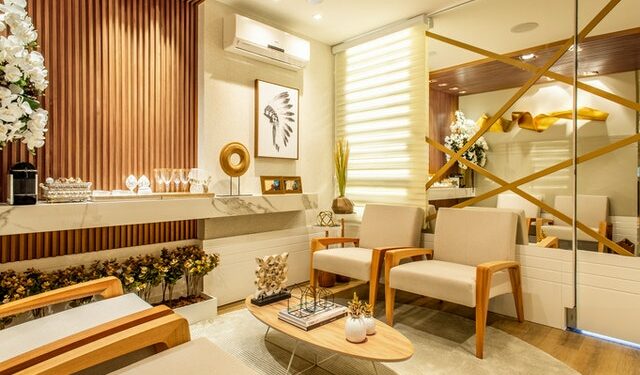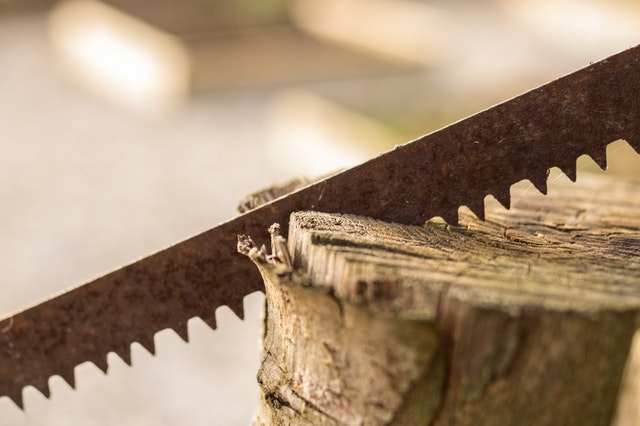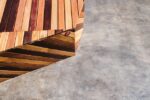How to cover wood paneling without painting

There are a few different types of paneling covers available on the market, so it’s important to choose the right one for your needs. If you’re looking for a cover that will completely transform the look of your room, go with a solid wood or PVC cover. These materials can be stained or painted to match your décor. If you just want to update the look of your paneling without changing its color, opt for a textured wallpaper cover.
To avoid any mistakes, it’s best to measure and cut the paneling cover before applying any adhesive. Once you have the cover cut to size, apply an even layer of adhesive to the back. Be sure to follow the manufacturer’s instructions for the best results.
After the adhesive has been applied, carefully position the cover over the paneling. Use a smoothing tool to remove any wrinkles or bubbles. Once you’re happy with the way it looks, let the adhesive dry completely before using your room.
With these simple tips, you can easily update the look of your wood paneling without painting or sanding. Choose a cover that fits your style and follow our easy instructions for a flawless finish.
Choose the right type of paneling cover
Covering wood paneling is a great way to improve the look of your home without having to paint. However, not all coverings are created equal. You need to choose the right type of covering to ensure a good result.
In this post, we will explore the different types of paneling coverings and help you choose the right one for your needs.
Wood paneling is a popular choice for homes because it is relatively inexpensive and easy to install. However, wood paneling can be difficult to maintain and can show wear over time. Covering wood paneling is a great way to improve the look of your home without having to paint or replace the paneling itself.
There are several different types of paneling coverings available on the market, each with its own advantages and disadvantages. Below, we will explore the most popular types of paneling coverings so that you can make an informed decision about which one is right for your home.
1. Peel-and-stick vinyl covering: Peel-and-stick vinyl covering is one of the easiest and most popular options for covering wood paneling. This type of covering is available in a wide variety of colors and patterns, so you can find an option that complements your home’s décor. Peel-and-stick vinyl is also easy to install; simply peel off the backing and stick the covering to the paneling.
One downside of peel-and-stick vinyl is that it is not always durable. If you are looking for a long-term solution, this may not be the best option. Additionally, peel-and-stick vinyl can be difficult to remove if you decide you want to change the look of your paneling in the future.
2. Paint: Painting over wood paneling is another popular choice for covering up the paneling. This option is relatively simple and can be done with a brush or roller. However, it is important to choose the right type of paint so that the finish will last. High-quality latex paint is a good option for painting over wood paneling.
One advantage of painting over wood paneling is that you can easily change the color if you decide you want to change the look of your home in the future. Additionally, paint is generally more durable than vinyl coverings. However, painting can be time-consuming, and it may be necessary to sand or prime the paneling before applying paint.
3. Wallpaper: Wallpaper is another popular choice for covering wood paneling. Wallpaper is available in a variety of colors and patterns, so you can find an option that complements your home’s décor. Wallpaper is also relatively easy to install; simply apply wallpaper adhesive to the back of the paper and attach it to the paneling.
One downside of wallpaper is that it can be difficult to remove if you decide you want to change the look of your paneling in the future. Additionally, wallpaper is not always as durable as paint or vinyl coverings.
4. Fabric: Fabric is another option for covering wood paneling. This option is best suited for smaller spaces, such as accent walls. To cover wood paneling with fabric, simply staple or glue the fabric to the back of the paneling.
One advantage of using fabric to cover wood paneling is that it is relatively inexpensive. However, fabric is not as durable as paint or vinyl, so it may need to be replaced more frequently. Additionally, fabric can be difficult to remove if you decide you want to change the look of your paneling in the future.
5. Paneling veneers: Paneling veneers are thin sheets of wood that are applied to the surface of wood paneling. Veneers are available in a variety of colors and styles, so you can find an option that complements your home’s décor.
One advantage of paneling veneers is that they are relatively easy to install; simply apply glue or adhesive to the back of the veneer and attach it to the paneling. Additionally, veneers are relatively durable and can last for several years. However, paneling veneers can be difficult to remove if you decide you want to change the look of your paneling in the future.
No matter which option you choose, covering wood paneling is a great way to improve the look of your home without having to replace the paneling itself. With so many options available, you can find a solution that fits your budget and needs.
Measure and cut the cover to size
Wood paneling is a popular way to add some extra warmth and style to a room, but it can be tricky to paint. If you want to avoid the hassle of painting, there are other ways to cover wood paneling. Read on for tips on how to do it without any painting required!
– Start by measuring the area you want to cover. You’ll need to cut your covering material to size so it’s ready to go.
– Once you have your measurement, choose a covering material. There are a few different options available, including fabric, wallpaper, and even contact paper.
– If you’re using fabric, start by stapling it into place at the top of the wood paneling. Then, use a hot glue gun to secure it along the edges.
– For wallpaper, simply apply it directly to the wood paneling with adhesive. You may need to trim it down to size once it’s in place.
– Contact paper is another easy option for covering wood paneling. Simply apply it like you would wallpaper, and trim to size as needed.
With these tips, you can cover wood paneling without painting it. Choose a material that best suits your style and needs, and enjoy the new look of your room!
Apply adhesive to the back of the cover
If you have wood paneling in your home, you may be looking for a way to cover it up without having to paint. Painting can be a hassle, and if you don’t do it properly, the results can be less than desirable.
One way to cover wood paneling is to apply adhesive to the back of some decorative fabric and then stick it to the paneling. This will give your walls a new look without all of the work that goes into painting them.
Another option is to use wood paneling wallpaper. This wallpaper can be found at most home improvement stores and comes in a variety of colors and designs. It’s easy to apply and will give your walls a whole new look.
If you want to cover up your wood paneling without painting, there are a few different options that you can choose from. Adhesive fabric, wood paneling wallpaper, and even paintable wallcoverings are all great choices. With a little bit of effort, you can transform the look of your home without having to break out the paintbrush.
Stick the cover to the paneling
If you’re looking for an easy way to give your wood paneling a new look, consider using a cover. Covers come in a variety of materials, so you can find one that will match your existing décor. Plus, covers are easy to install—you don’t need any tools or experience! Here’s how to get started:
1. Measure the surface area of the paneling that you want to cover.
2. Purchase a cover that is the correct size.
3. Peel off the adhesive backing and stick the cover to the paneling.
4. Smooth out any wrinkles or bubbles with your hand.
5. Enjoy your new look!
Smooth out any wrinkles or bubbles
There are a lot of different ways to cover up wood paneling, but painting is often the go-to solution. However, if you’re looking for a way to avoid the hassle and mess that comes with painting, there are a few other options worth considering. In this post, we’ll explore some of those options and show you how to smooth out any wrinkles or bubbles before you apply them.
One popular option is to use wallpaper. Wallpaper can be a great way to cover up wood paneling without painting because it’s easy to apply and comes in a wide variety of colors and patterns. Plus, it’s relatively inexpensive and can be found at most home improvement stores.
If you’re not a fan of wallpaper, another option is to use fabric. Fabric is a great choice if you want to add some color or pattern to your room without going over the top. It’s also fairly easy to apply, although you may need some help getting it started. Once it’s in place, you can use a stapler or adhesive to keep it in place.
Another option is to install new molding over the old paneling. This is a good choice if you want to cover up the paneling without painting it, but you don’t want to completely change the look of your room. You can find molding at most home improvement stores, and it’s relatively easy to install.
Finally, if you’re looking for a more permanent solution, you can always replace the wood paneling with drywall. Drywall is more expensive than other options, but it will definitely give you a fresh start. Plus, it’s much easier to paint over drywall than it is to paint over wood paneling.
These are just a few of the many options available for covering up wood paneling without painting. So, if you’re not a fan of painting or you’re looking for a more budget-friendly option, be sure to explore some of these other choices.
Let the adhesive dry completely before using your room
If you have wood paneling in your home and you’re not a fan of the way it looks, you may be considering painting it. But before you go to all that trouble, there is another option: covering it with adhesive fabric. This can be a great way to give your walls a new look without all the hassle of painting.
The first thing you’ll need to do is measure the area you want to cover and then cut your fabric accordingly. Once you have your fabric cut to size, simply apply adhesive to the back of it and stick it to your wall. Start at the top and work your way down, smoothing out any wrinkles as you go.
Let the adhesive dry completely before using your room. And that’s it! You now have a new look for your wood paneling without having to paint a thing.
How to cover wood paneling without painting
Covering wood paneling without painting is a great way to improve the look of your walls without having to spend time and money on a paint job. In this article, we’ve shown you three different ways to cover up your paneling: using wallpaper, fabric, or molding. Try out one or all of these methods to find the best solution for your home.
Wallpaper is a great way to cover up wood paneling and add some color or pattern to your walls. Look for wallpaper that’s specifically made for covering paneling, as this will make it easier to apply and more likely to stay in place. If you want a really smooth finish, you can even paint over the wallpaper once it’s been applied.
Fabric is another option for covering wood paneling. You can staple or adhesive-backed fabric directly to the paneling, or you can hang it like wallpaper using Drapery Rods & Hardware. Fabric is a great way to add some interest to your walls without painting them, and it’s also relatively easy to remove if you change your mind.
Molding is a third option for covering wood paneling. You can use molding to create a frame around each panel, or you can use it to cover the entire panel. Molding is a great way to add some architectural interest to your walls without painting them. And like wallpaper, you can paint over molding if you want to change the color later on.
These are just a few ideas for covering up wood paneling without painting. Try out one or all of these methods to find the best solution for your home.





